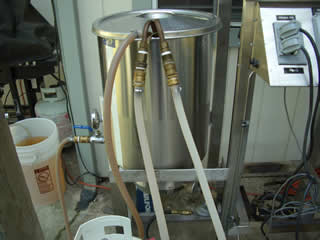Hello,
I tried to search on this topic but it seems I wasn't able to find anything. I am a total newb at brewing and intend to use the Coopers micro kit. Anyway, I'm wondering about the best way to chill the wort? If I use an ice bath, typically how long and how much ice should I use? For example, just put a 7 pound bag of ice in the sink and stick the wort-pot into that...wait 2 hours??
I tried to search on this topic but it seems I wasn't able to find anything. I am a total newb at brewing and intend to use the Coopers micro kit. Anyway, I'm wondering about the best way to chill the wort? If I use an ice bath, typically how long and how much ice should I use? For example, just put a 7 pound bag of ice in the sink and stick the wort-pot into that...wait 2 hours??






